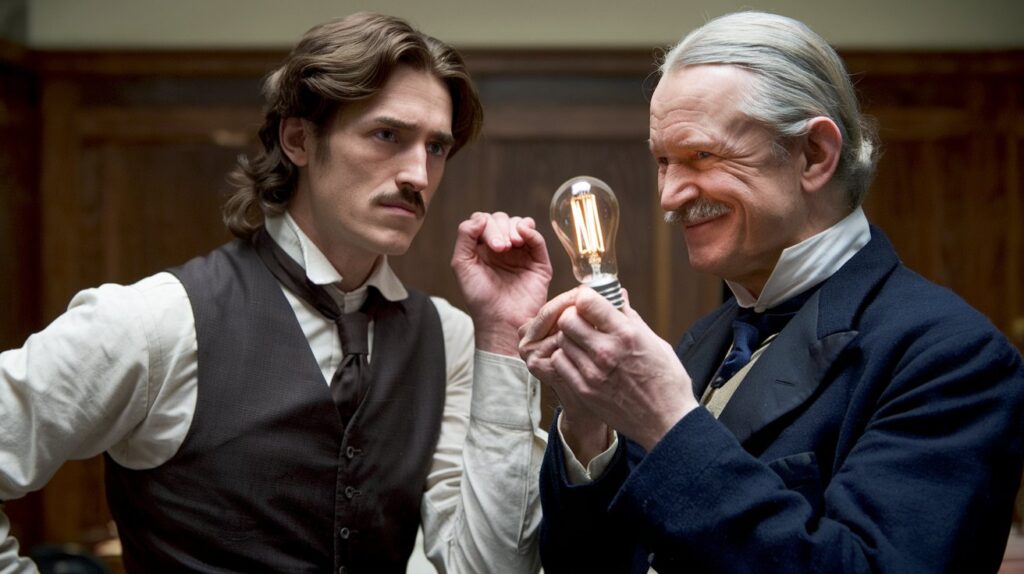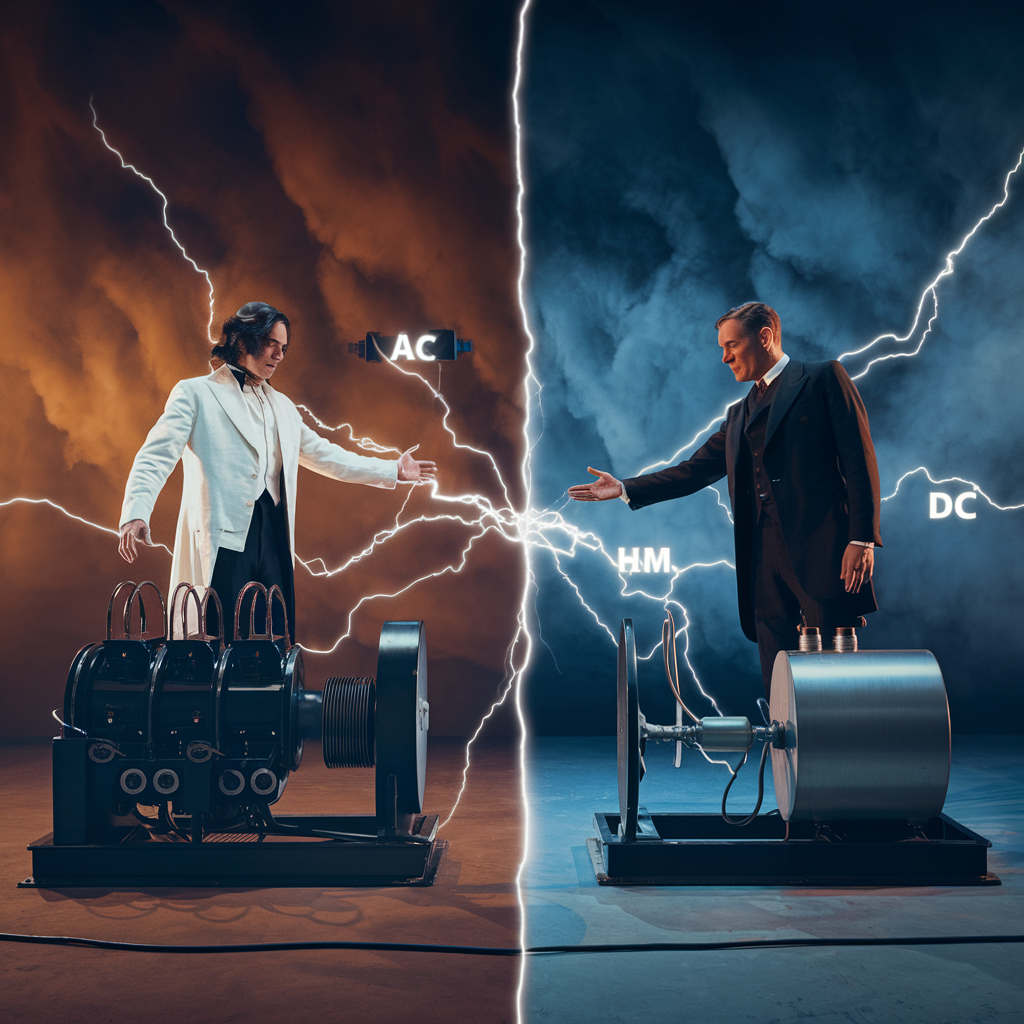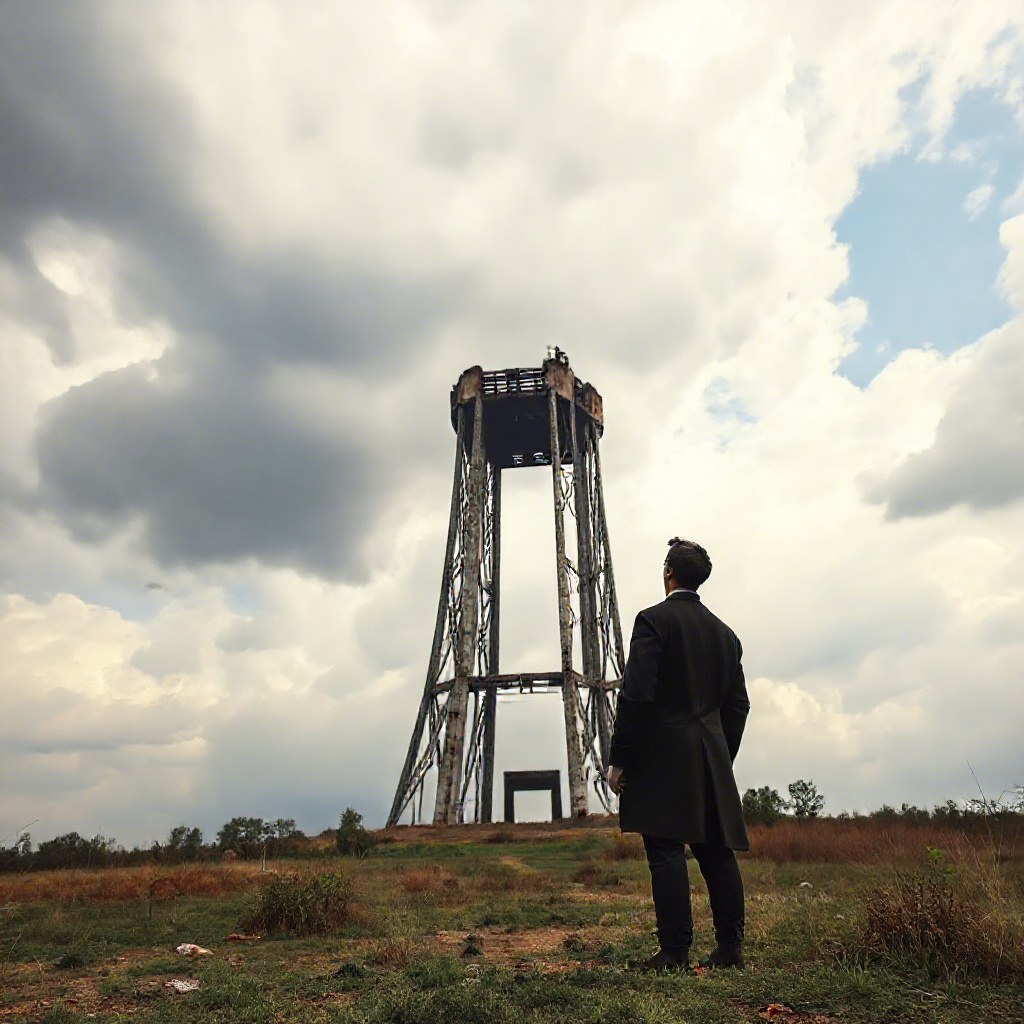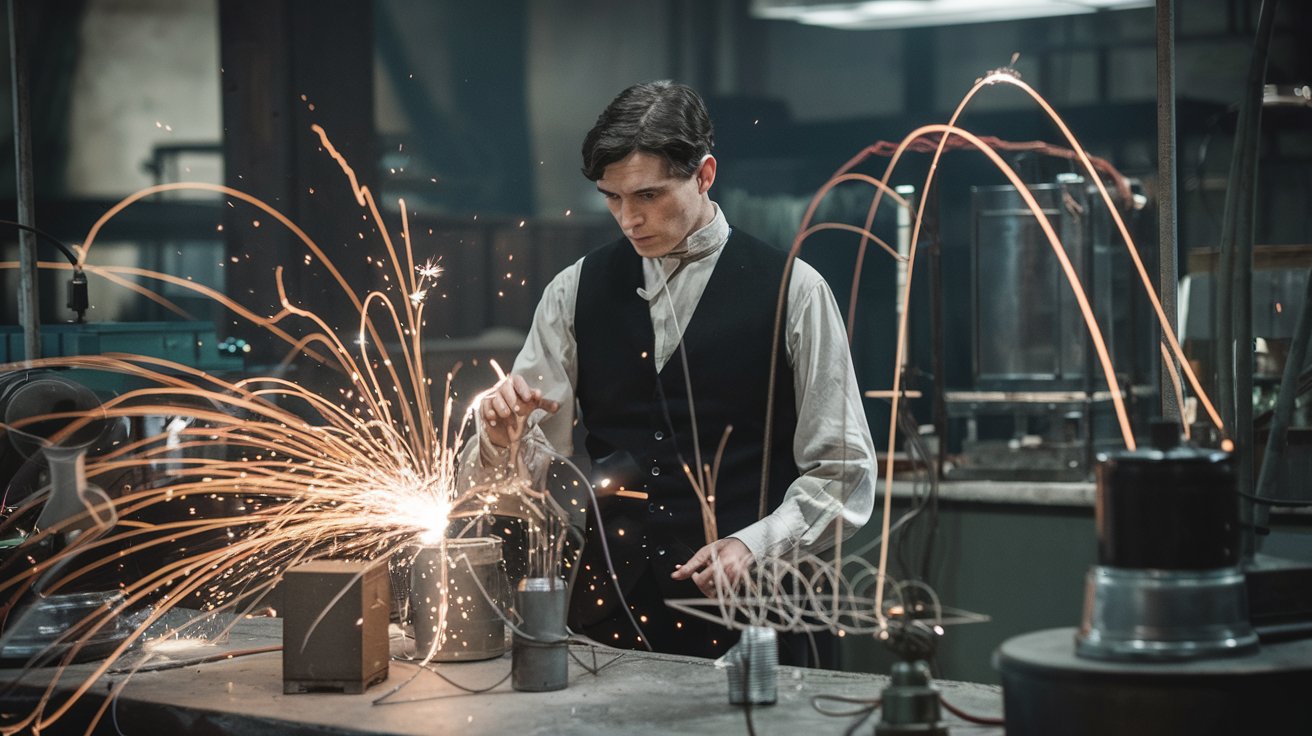Nikola Tesla, one of the most brilliant minds of the modern world, was born on July 10, 1856, during a thunderstorm in a small Croatian village. The midwife, alarmed by the storm, called him a “child of darkness,” but his mother confidently replied, “No, he is the light that will illuminate the world.” Little did she know, Tesla’s extraordinary inventions would indeed change the course of history.
Edison’s Cold Betrayal: A Million-Dollar Joke

Tesla’s early years in the United States, however, were marked by one of the most heartbreaking moments of his career. Fresh off the boat from Europe in 1884, Tesla began working for Thomas Edison, hoping to make a name for himself. Edison, already a giant in the electrical world, promised Tesla $50,000 (around $1 million today) if he could improve Edison’s direct current (DC) systems.
Tesla worked tirelessly, enhancing Edison’s designs and making them more efficient. But when Tesla asked for the promised reward, Edison laughed in his face, saying, “Tesla, you don’t understand our American humor!.” It was a cruel joke that crushed Tesla’s spirit, and he walked away from Edison’s company—scammed and penniless.
The War of Currents: Electrocutions, Elephants, and Triumph

Though disillusioned by Edison’s betrayal, Tesla didn’t give up. His genius pushed him to develop the alternating current (AC) system, which he believed was far superior to Edison’s DC. AC allowed electricity to be transmitted over long distances, solving one of DC’s biggest problems. Tesla’s ideas caught the eye of industrialist George Westinghouse, and together they set out to revolutionize the electrical industry.
This led to the infamous “War of Currents,” with Edison going to extreme lengths to discredit Tesla’s AC. Edison held public demonstrations, electrocuting animals—including an elephant—to convince people that AC was dangerous. He even used AC in the first electric chair execution, in an attempt to tarnish its reputation. Despite these gruesome tactics, Tesla’s AC ultimately won the war when it was chosen to power the 1893 World’s Columbian Exposition in Chicago, illuminating the fair and proving to the world that AC was the future.
From Glory to Ruin: The Dream That Never Came True

Though Tesla emerged victorious in the War of Currents, his personal life was filled with tragedy and financial struggles. One of Tesla’s grandest dreams was to transmit electricity wirelessly across the globe, through his “Tesla Tower.” This ambitious project aimed to provide free energy to everyone, but after years of work, the project failed due to lack of funding. Investors pulled out, and Tesla found himself on the edge of financial collapse.

To make matters worse, Tesla’s inventions were being used by others to gain fame and fortune. Guglielmo Marconi, the Italian inventor who won the Nobel Prize for developing the radio, had used 17 of Tesla’s patents. Although Tesla held the original U.S. patent for the radio, the rights were eventually stripped from him and awarded to Marconi. Tesla was left bitter, broke, and heartbroken.
The Lonely End of a Genius

In the twilight of his life, Tesla lived in near isolation, moving from hotel to hotel, unable to pay his bills. He spent his final years feeding pigeons—his only true companions. Despite his monumental contributions to science and technology, he died alone in a New York hotel room in 1943, largely forgotten by the public.
Yet, his legacy endures. Tesla’s alternating current powers the world, and his ideas laid the foundation for wireless communication and modern technology. As he once said, “The present is theirs; the future, for which I really worked, is mine.” Tesla may have died a broken man, but his genius continues to light up our world.



